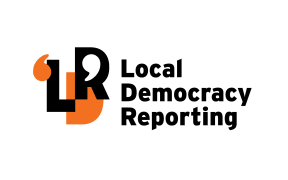The findings from an investigation into a patient’s death at Middlemore Hospital’s emergency department in June highlight the extreme pressures it had been operating under due to staffing shortages and surging patient numbers.
The staffing levels for nurses in Middlemore Hospital’s ED were below the numbers rostered on the night the woman arrived, the findings say.
Photo: LDR / Stephen Forbes
But the Te Whatu Ora Counties Manukau report called for an independent review of the incident to determine what, if any, changes were needed.

The patient first arrived at the emergency department about 1am on 15 June with a severe headache. She was told it would likely be hours before she could be seen and left.
She returned to the hospital in an ambulance a few hours later after a “massive” brain haemorrhage and died the following day.
In findings released on Wednesday, Te Whatu Ora Counties Manukau acting chief medical officer Andrew Connolly said the patient was not assessed and had not registered at the front desk.
But he said he was also satisfied that she was not declined care, or instructed to leave the emergency department.
“The fundamental issue was the excessive demand for assessment and care in the ED; that, in turn, led to excessive waiting time in the department.”
Connolly said at 1am when the woman arrived the ED itself was “abnormally busy” with a total of 195 patients and 46 people in the waiting room.
He said the fact the patient was not triaged meant staff didn’t establish what her symptoms were, or obtain her “vital signs”.
Connolly said the staffing levels for nurses in the ED were below the numbers rostered, but the biggest problem was the high patient demand at the time.
“Therefore, even if staffing had been at 100 percent of the nursing roster I believe this would still not have adequately met the excessive demand in the department that night.”
He said the case was tragic, but he did not know if it was possible to determine with any degree of certainty if the outcome would have been different had the patient been assessed and remained in the department.
Connolly’s findings ended with a call for Middlemore Hospital to consider an independent review by an emergency department expert to determine if any further improvements were needed.
In a separate statement he said: “Our heartfelt sympathy remains with the family for their loss. We will not comment further and respectfully decline to be interviewed on this matter.”

Dr Shane Reti
Photo: RNZ / Angus Dreaver
But National Party health spokesman Dr Shane Reti said the findings highlighted the fact the patient was not triaged before being told of the wait times at the hospital on 15 June.
“Only those patients who had been triaged should have been notified of the wait times.”
Reti said this may have contributed to the patient leaving before she could be assessed.
He said the investigation stated that the ED was operating with a shortfall of three nurses, but that it wouldn’t have impacted on the patient’s assessment.
“But of course they would have made a difference. The workforce shortages were a contributing factor,” Reti said.
He said the findings showed Middlemore Hospital’s ED didn’t have the workforce required to deal with the patient numbers.
“The Minister of Health needs to contemplate his responsibility for this and the health workforce shortages which were so central to this tragic incident.”
Local Democracy Reporting is a public interest news service supported by RNZ, the News Publishers’ Association and NZ On Air.




















Discussion about this post